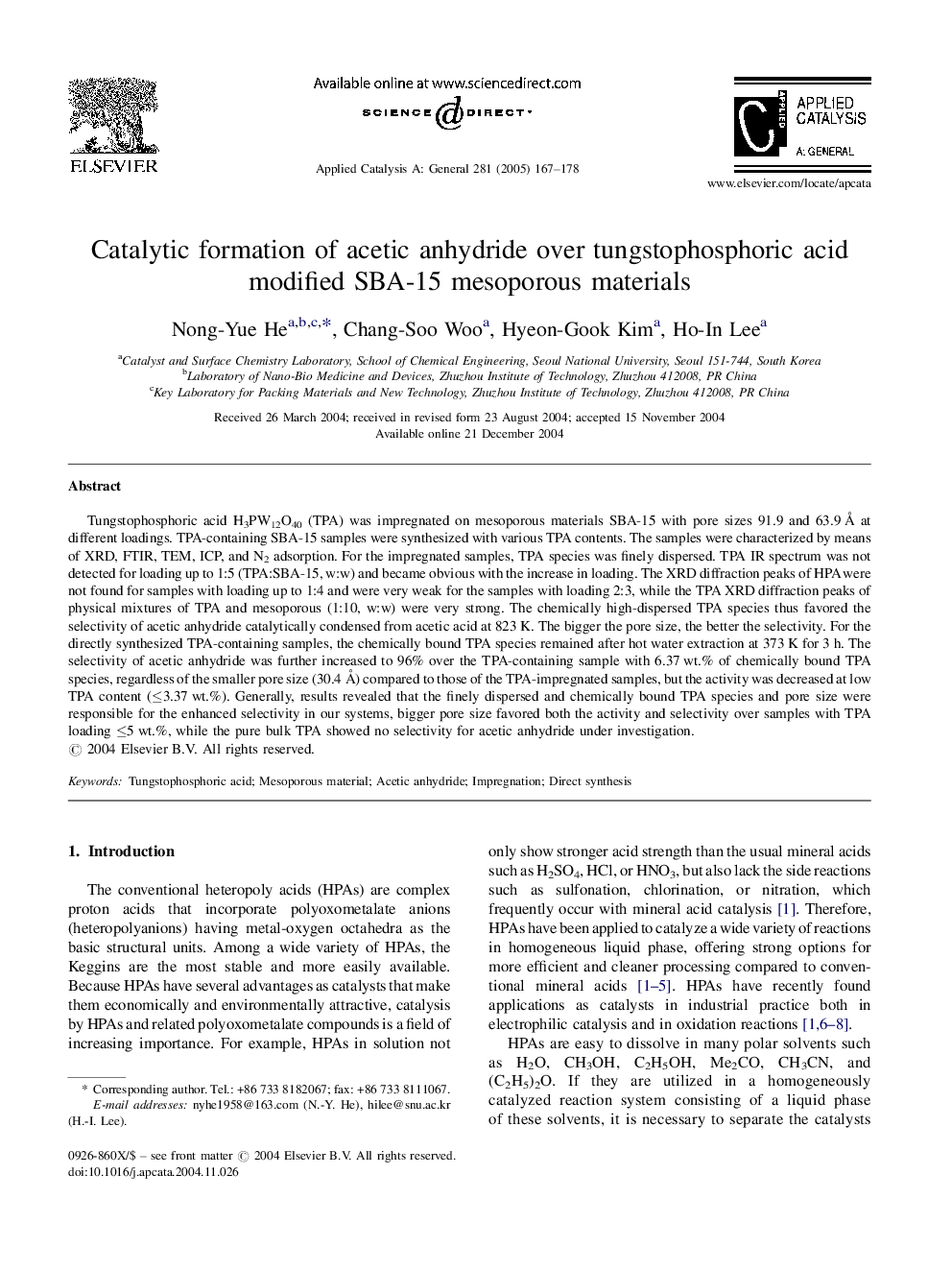| Article ID | Journal | Published Year | Pages | File Type |
|---|---|---|---|---|
| 9608094 | Applied Catalysis A: General | 2005 | 12 Pages |
Abstract
Tungstophosphoric acid H3PW12O40 (TPA) was impregnated on mesoporous materials SBA-15 with pore sizes 91.9 and 63.9Â Ã
at different loadings. TPA-containing SBA-15 samples were synthesized with various TPA contents. The samples were characterized by means of XRD, FTIR, TEM, ICP, and N2 adsorption. For the impregnated samples, TPA species was finely dispersed. TPA IR spectrum was not detected for loading up to 1:5 (TPA:SBA-15, w:w) and became obvious with the increase in loading. The XRD diffraction peaks of HPA were not found for samples with loading up to 1:4 and were very weak for the samples with loading 2:3, while the TPA XRD diffraction peaks of physical mixtures of TPA and mesoporous (1:10, w:w) were very strong. The chemically high-dispersed TPA species thus favored the selectivity of acetic anhydride catalytically condensed from acetic acid at 823Â K. The bigger the pore size, the better the selectivity. For the directly synthesized TPA-containing samples, the chemically bound TPA species remained after hot water extraction at 373Â K for 3Â h. The selectivity of acetic anhydride was further increased to 96% over the TPA-containing sample with 6.37Â wt.% of chemically bound TPA species, regardless of the smaller pore size (30.4Â Ã
) compared to those of the TPA-impregnated samples, but the activity was decreased at low TPA content (â¤3.37 wt.%). Generally, results revealed that the finely dispersed and chemically bound TPA species and pore size were responsible for the enhanced selectivity in our systems, bigger pore size favored both the activity and selectivity over samples with TPA loading â¤5 wt.%, while the pure bulk TPA showed no selectivity for acetic anhydride under investigation.
Related Topics
Physical Sciences and Engineering
Chemical Engineering
Catalysis
Authors
Nong-Yue He, Chang-Soo Woo, Hyeon-Gook Kim, Ho-In Lee,
